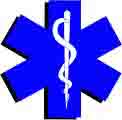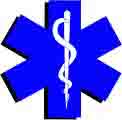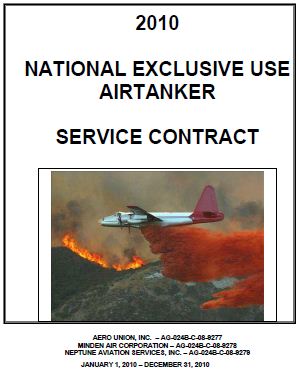 A myth is developing at Redding, California’s Record Searchlight that the new protocols developed by the National Wildfire Coordinating Group about managing medical emergencies on incidents recommend or even mandate that accident victims on a fire arrive at an appropriate medical facility within the “Golden Hour”. We pointed out on July 4 that even though the myth is fueled by Jim Milestone, superintendent of the Whiskeytown National Recreation Area, who was on the investigation team for Andrew Palmer’s fatal accident, the new protocols fall short of establishing target time frames for transporting a seriously injured patient.
A myth is developing at Redding, California’s Record Searchlight that the new protocols developed by the National Wildfire Coordinating Group about managing medical emergencies on incidents recommend or even mandate that accident victims on a fire arrive at an appropriate medical facility within the “Golden Hour”. We pointed out on July 4 that even though the myth is fueled by Jim Milestone, superintendent of the Whiskeytown National Recreation Area, who was on the investigation team for Andrew Palmer’s fatal accident, the new protocols fall short of establishing target time frames for transporting a seriously injured patient.
Here is an excerpt from an editorial in the July 11 edition of the Record Searchlight that repeats their myth:
…Federal firefighters have taken the lesson from Palmer’s death and are drafting more detailed evacuation plans so they know not just how to get crews to a fire, but how to get injured colleagues out promptly. The goal is to reach a hospital within “the Golden Hour,” when experience shows emergency physicians have the best chance to save trauma victims’ lives.
Recommendations from the National Wildfire Coordinating Group also focus on creating a clear chain of command and communications so conflicting orders and information don’t make a bad situation even worse.
Bringing those lessons into the various fire agencies’ standard procedures would go a long way toward saving firefighters’ lives, but the diverse ecosystem of local, state and federal fire teams, along with private contractors, means even lifesaving changes can take time to filter through the ranks.
Delay carries a heavy cost. Over the past decade, an average of 22 firefighters have died each year battling wildland blazes in the United States. And with long-term trends seeming to bring worse fire seasons with ever-larger acreages burning, the hazards for the men and women who keep our homes safe are only likely to grow.
For the fire commanders and agency bosses who can push for progress toward greater safety, it’s hard to see a better motivation than those nearly two dozen deaths that happen in a typical year. The lives that tighter evacuation procedures might save could easily be those of the firefighters on your crew. Those heroes deserve every chance we can provide to make it home.
I wish it were true that the NWCG protocols established patient transport time frames, but until they do, the Record Searchlight needs to get their facts straight.


